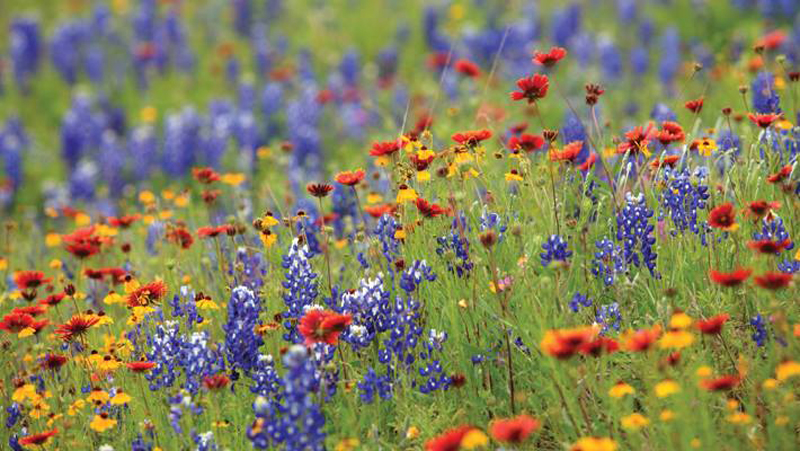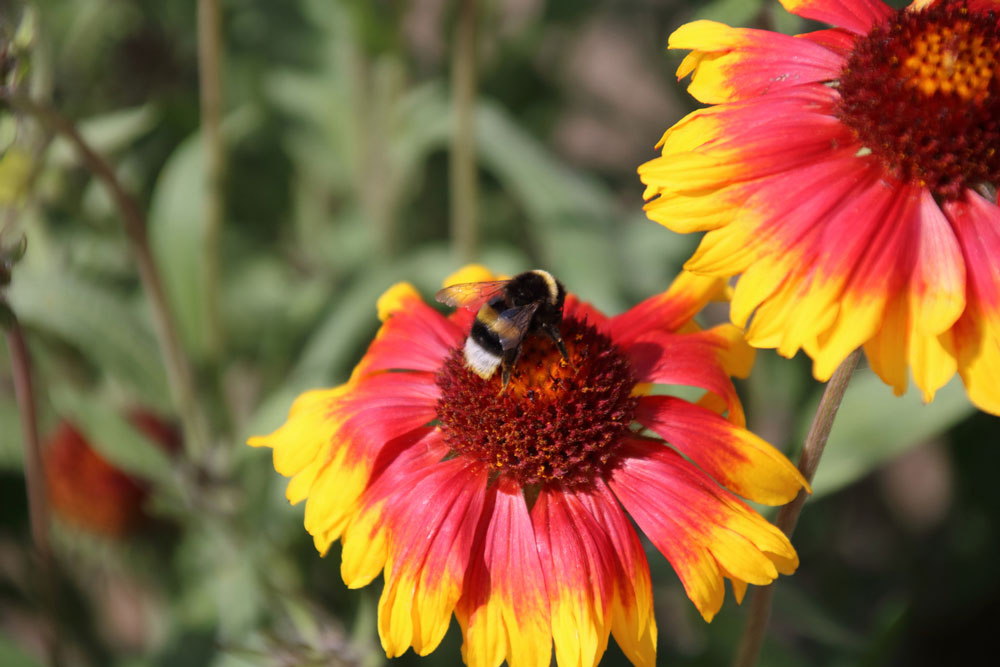
Pollinators land on the bottom, all blue, portion of a bluebonnet floret, causing the upper half to open up into two parts and expose the stamens and pistil, where pollen is taken and left behind. Photo by Ronnie Madrid/Divine Radiance Photography
Texas roadways and pastures turn the color of the sky as bluebonnets burst forth each spring, bringing butterflies and bees buzzing to collect pollen for food. In turn, they leave behind enough to produce next year’s bounty in blue. The Texas State Flower also attracts tourists to the Highland Lakes each spring as they look for the perfect spot to stop and set up a photo shoot.
Bluebonnets, which are part of the legume, or bean, family, are designed for survival, enticing pollinators with their inner workings and wildflower enthusiasts and photographers with their beauty.
Bees are drawn to the white tops of the individual flowers as well as the many white-tipped florets that make up the whole. Bluebonnet florets stay closed until the weight of a pollinator landing opens them, exposing the keel, two petals protecting the stamen and pistil. Stamens produce pollen, while pistils receive it and do the work necessary to produce hundreds of seeds.
Once an individual bluebonnet has been visited by a butterfly or bee, the white begins to slowly turn purple-red, a color pollinators can’t see. They pass the aging bluebonnets by, moving on to the next still-white plant.
When they take off, the florets close — picture perfect once again!
Fascinating facts about these fabulous florals
- Bluebonnet florets have five petals each: two wing petals, two keel petals, and the banner petal.
- The banner petal forms the upper part of the floret, which attracts bees with its white color.
- The leaves, which grow close to the ground, are palmates, meaning they radiate from one point with five spread “fingers” like a hand.
- After a rain, careful observers will find a drop of water in each bowl-like bonnet, another attraction for butterflies and bees.
- Bluebonnets along roadways help protect against erosion year-round.
- The wildflower obtained its name from its shape, which resembles bonnets worn by pioneer women to shield themselves from the sun.
- Texas is the only place in the world to find five of the many types of bluebonnets.
- Burnet officially became the “Bluebonnet Capital of Texas” in 1981 when the 67th Texas Legislature passed Senate Concurrent Resolution 108.












